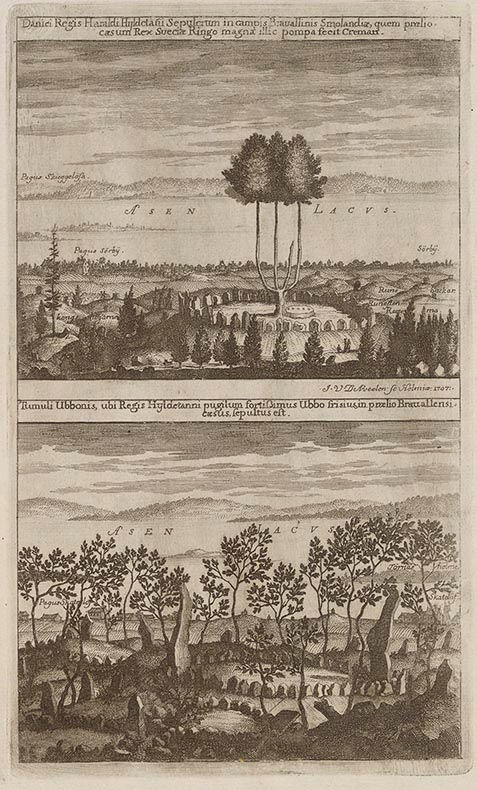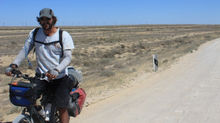Kings, Gods and Battles: Re-Imagining a Legend of the Viking Age
- Theodore Brun

- Apr 15, 2019
- 4 min read
My first novel, A Mighty Dawn was set in the domain of Old Norse myth. The second book in the series, A Sacred Storm, progresses the story into the realm of legend.
Is there a difference, you may ask? ...Well, I think so.
When I first began weaving together the plot running through the two books, the climax of the second was to centre on a fictitious blood feud between two rival kingdoms that escalates into a battle of epic proportions. But then, during the course of my research, I came across a handful of historical sources that describe just such a battle having taken place. Something evoking the Old Norse answer to the Iliad, or so it seemed to me, in which gods and heroes both stalk the battlefield.

Study of the Battle of Bråvalla by August Malmström – Nationalmuseum Stockholm
The accounts describe a large battle that occurred in what is now Sweden at some point in the middle of the 8th century, now known as the Battle of Brávellir (sometimes Bråvalla). This made my job considerably easier, providing, as it did, a wonderful level of detail.
The central character connected with the battle is a man called Harald Wartooth who, as soon as I struck upon him, I felt was pure box office. King of the Danes, Haraldr Hilditǫnn - known as the Wartooth - was almost certainly a real person. So named either because he lost a couple of teeth in a battle which then miraculously grew back, or else because of the odd setting of his front teeth.

Harald Wartooth at the Battle of Brávellir. Illustration by the Danish artist Lorenz Frølich.
He is one of the most striking characters in all the Old Norse sagas and is identified in several sources as ruler over a territory that stretched from Eastern Scandinavia (modern-day Finland and Estonia) as far west as Northumberland in northern England. Most of the detail on him that I use in A Sacred Storm comes from one surviving fragment of a saga, known as the Sögubrot.
However, the many stories and escapades spanning Harald’s life were eventually compiled as one part of a much larger work called the Gesta Danorum - the Deeds of the Danes - by a 12th century Danish historian called Saxo Grammaticus. (Incidentally, this book is where Shakespeare found the original story about a Jute prince called Amleth. Better known as Hamlet.)

Illustration of Saxo Grammaticus, author of the Gesta Danorum - the first full history of the Danes; by Louis Moe.
The episodes about Harald in the Gesta Danorum are many and colourful. Even from his birth, the Wartooth was special, his mother only conceiving him after a visit to an oracle of Odin and dedicating the life of any resulting child in service to that god.
Thus favoured by the war-god Odin, Harald Wartooth never wore armour in combat – suggesting that he was also a “berserker”. Even so, according to Saxo, Harald survived as king over Denmark and several other vassal kingdoms until the ripe old age of one hundred and twenty-seven (which stretches the bounds of credulity, to say the least). With the infirmities of age, he became increasingly paranoid that his more ambitious and unscrupulous underlings were trying to bump him off. His fears were not without foundation; there were several attempts to murder him, one of them in his bath. The Wartooth’s resulting determination not to die such an ignominious death, but instead to see out his days with one last, glorious battle, becomes the main driver for “arranging” a battle with a younger kinsman called Sigurd Hring, the king of Sweden (or Sveäland, as I call it).
The Battle of Brávellir became the stuff of legend. This epic clash of arms is described in both the sources mentioned, as well as The Saga of Hervör and Heidrek, and The Saga of Bósi and Herraud.

17th century engraving by Erik Dalhbergh of the Grave Mounds of Harald Wartooth (above) and Ubbi the Frisian (below) by Lake Åsnen in Sweden – both men fell at the Battle of Brávellir.
The way Saxo describes it, the battle came about rather in the manner of one king organising a football match against the other. A time and place were arranged. It was agreed that each side should have seven years to assemble the largest host they possibly could. One account puts more weight on the fact that the Wartooth spent those seven years harrying the borderlands with provocations that the Swedish king couldn’t ignore. This rings a little truer than the notion of a kind of glorified prizefight convened as a handy means of despatching this long-lived Danish king into the afterlife.
Be that as it may, the battle involved all the greatest champions of the age, and my account of the multitude of different tribes and people-groups, from lands as diverse as Russia to Ireland, is no exaggeration. Several of the champions mentioned in the sources appear in my novel: Starkad the Old, Ubbi the Frisian, Einar the Fat-Bellied, Grim and Geir of Hedmark, the shieldmaiden Visma to name just a few. Perhaps most notable is the Wartooth’s own banner-bearer, named Bruni. He was said to be the man who struck the death-blow to the old and blind King Harald, at last giving him the glorious death-in-combat that he was seeking, thereby setting him on his road to Valhalla and, incidentally, bringing the battle to a close. Bruni himself was never seen again. Thus a legend grew that Harald’s banner-bearer had in fact been the god Odin in disguise – the Wanderer stalking through the chaos of “Skogul’s Storm” choosing who shall live and who shall die.

Etching by Hugo Hamilton (1830), depicting Harald Wartooth falling in the Battle of Bråvalla
With the cast-iron truth about the lives and deaths of these ancient kings and warriors now lost in the mists of time, all of this hovers somewhere over the line between legend and history. But I hope that, whatever licenses I have afforded myself with the accepted facts in the writing of A Sacred Storm, readers will enjoy the story for what it is – an epic tale come down to us from the dawn of the Viking Age.





















Comments